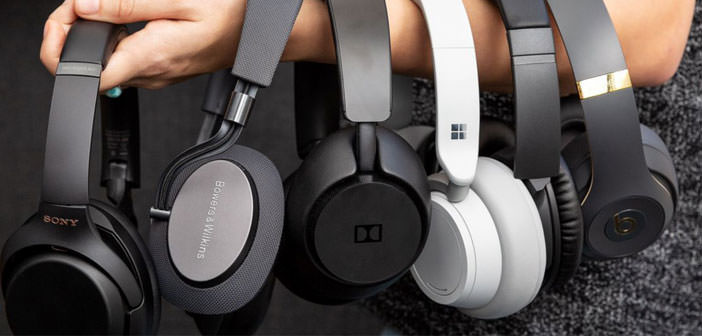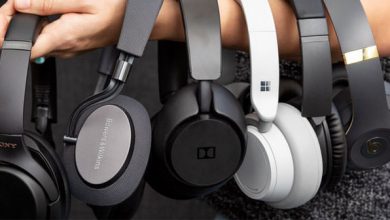
The earphones and headphones worn to listen to music or watch a movie are marked by two letters: the L and R. But what do L and R mean on the headphones?
The L and R are the initials of the English words left and right. So if the listener finds the letter L on the headset, it will mean that he will have to place that headset on his left ear. The speaker on which the letter R is indicated must instead be inserted or placed on the right ear.
But how come the manufacturers of headphones and earphones provide these specific indications? This article will investigate why each of our ears has its own reference earphone or speaker.
What do the letters L and R mean on headphones?
The L and R indications found on the headphones refer to the audio channels. The headphone manufacturers’ goal is to prevent the speakers from being inverted to ensure correct listening to the sound content. Each of the two headphones transmits its own audio channel, at least if they are stereophonic and not mono.
The headphones marked with the letter L, which indicates the English term left, or ” left, “work with the left audio channel; the one marked with the letter R, which indicates the word right, which means right, works with the right audio channel.
It is important not to invert the headphones or earphones because it is the only way to respect music producers, sound technicians, and musicians who record the sounds to allow listeners to enjoy the musical experience as if they were present at the time of live performance.
Why Do Headphones Have Right And Left?
The letters L and R, i.e., left and right, are signs placed on the headphones to help the correct enjoyment of content that has a distinct panning by those listening to the audio of a song, watching a movie, or playing with a videogame. What is panning? It is the distribution of sound in the stereophonic spectrum.
When distinct, Panning allows audio to be shifted to one side of the stereo spectrum, left or right. It is a fundamental aspect, especially for those who pay great attention to sound and those who love to watch a movie wearing headphones.
An example of the cinematographic content transmitted on an HD TV can be useful when sitting comfortably on the sofa at home wearing stereo headphones. Suppose a scene in which a character walks in the movies moves while speaking, from the left side of the screen until he disappears on the TV’s right side.
When mixing the sound, the technicians moved the sound effect, produced by the actor’s voice, from the left channel to the right channel so that there is perfect synchrony between what is seen and what is heard by the viewer.
You can imagine what the result would be if the headphones were worn incorrectly: while the character speaks walking to the right, the sound of his voice would be produced on the opposite side.
In 3D movies, the alienating effect would be even greater if the headphones were mistakenly reversed. With an HD TV, if the killer gets behind him, the viewer will feel the footsteps in front of him.
2-Channel Stereo Headphones?
L and R’s indication on headphones or earphones is essential if you are listening to stereo sound. Stereo music is usually recorded on two microphones, although in some cases, even more than two are used. The correct positioning of the microphones requires one on the left and one on the right.
The microphones are carefully kept separate and recorded on the assigned channels, left and right. When playing sound, the audio device should keep the channels distinct and correctly identified. The first thing to keep in mind is that in the audio world, they are called the left channel and the right channel.
They are ” discrete ” channels; this means that the information from each side is unique. This system is called ” Stereo Sound Stage ” and greatly enriches the experience of listening to music compared to everything that seems to come from a single point: the so-called ” mono ” effect.
The left and right sides of headphones, speakers, or other playback devices indicate which speaker will play which part or sound element.
Returning to the orchestra’s example, if you do not respect the assignment of the earphones according to the right and left, the arrangement of the musical ensemble instruments will be perceived incorrectly, the musicians’ positions will be reversed from left to right.
Some listeners, the less experienced, do not notice it, but connoisseurs remain disoriented. At the time of listening, the music should flow through the headphones as it was ” conceived. ” It is clear that if the signal instead of being stereophonic were mono, there would no longer be a need for the left and right indication.
Some musical genres, such as orchestral music, strategically arrange the instruments. Music fans perfectly perceive how important respect for this positioning is when listening.
The drums must be heard inside the left earphone while the right ear’s rhythm guitar sound will be perceived.
Today most music plays bass and treble in different ears. This is because the human being unconsciously divides most of the sounds, each channeling them into one ear.
If the sound is low, then it is the left ear that activates. The right one is interested in the high notes. With this in mind, most music has bass on the left and treble on the right: the goal is to provide the listener with the best possible musical experience.
Headphones and Video Games
The indication on the right and left are not only valid for listening to a piece of music. Positioning the headphones correctly is also important for the video game experience.
In most ” first-person shooter ” games, indicated with the acronym FPS, a player’s success depends on how he can listen for the things that happen around him. You can imagine how important it is to wear headphones correctly, especially if the enemy makes his appearance on the left of the player, who instead senses the steps on his right, thus ending up being disoriented and defeated.
Why do the headphones have the left headphone cable shorter than the right headphone cable?
Some models of earphones and headphones have cables where one side is longer than the other. These are called ” asymmetric ” cables and are a precise choice of headphone and earphone manufacturers.
The longest side of the cable must be positioned behind the neck to get to the other side of the head so that the earphone is then inserted into the ear. In this way, the listener, instead of having two cables hanging in front in a ” Y ” position, with the asymmetrical configuration, will not have the drawback of having the cable hanging under the chin.
Thanks to this design of the headphones, the possibility is avoided that inadvertently, with a movement of the listener’s hand, the cable can become entangled, and the earphones detach from the ears. If an earphone or both still slip away from the pavilions, the right cable positioned around the neck will prevent the earbuds from falling. (Also read our Guide to Wireless Headphones)
Product prices and availability are subject to change. Any price and availablility information displayed on Amazon at the time of purchase will apply to the purchase of any products.
